The Telescopes of the Isaac Newton
Group
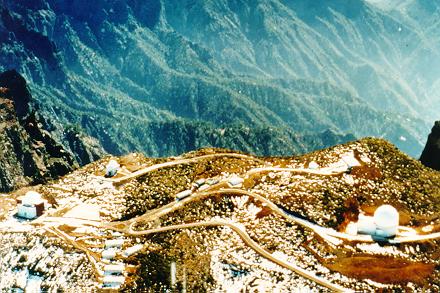 THERE ARE THREE telescopes in
the Isaac Newton Group THERE ARE THREE telescopes in
the Isaac Newton Group 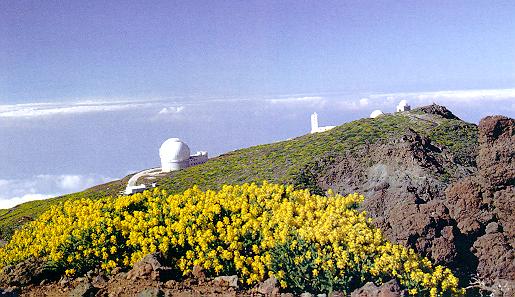 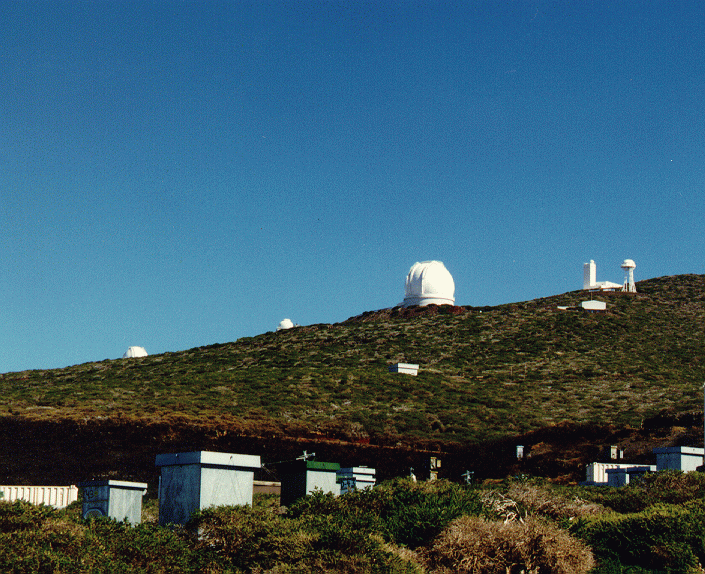 : :
-
4.2
m William Herschel Telescope (WHT)
-
2.5
m Isaac Newton Telescope (INT)
-
1.0
m Jacobus Kapteyn Telescope (JKT)
All three are reflecting telescopes,
collecting and focusing the light from stars and galaxies by mean of mirrors
whose reflecting surfaces have been figured to within a fraction of the
wavelength of light. Each telescope is housed in its own dome, which is
opened at night to allow an unobstructed view of the sky. The observatory
offers a wide range of instruments, allowing the light from distant objects
to be analysed in different ways. These instruments are continually being
upgraded and enhanced to keep the telescopes scientifically competitive.
The three telescopes have
complementary roles:
- The WHT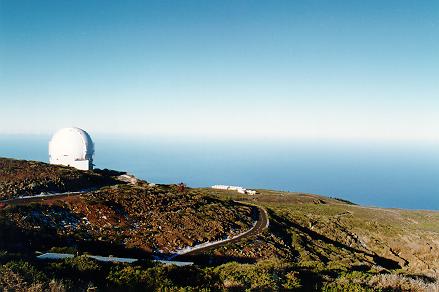 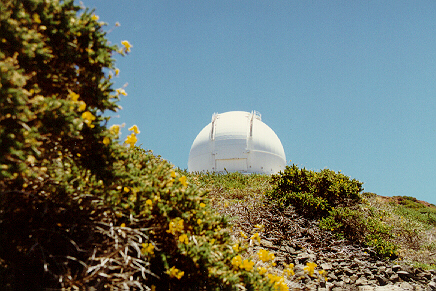 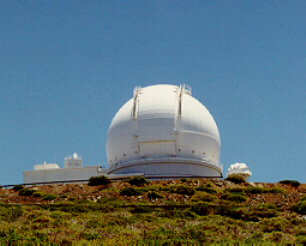 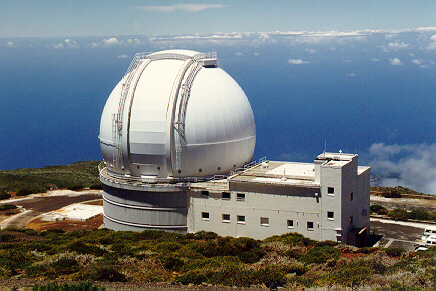  ,
with its 4.2 m diameter primary mirror ,
with its 4.2 m diameter primary mirror  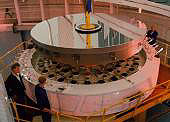 ,
is the largest telescope in Western Europe. It was first operational in
August 1987. It is a general purpose telescope equipped with instruments
for a wide range of astronomical observations. WHT overall height from
base is 18.1 m. Logo: [gif,35k][jpg,29k]
. This is a scheme of
the light path inside the telescope. ,
is the largest telescope in Western Europe. It was first operational in
August 1987. It is a general purpose telescope equipped with instruments
for a wide range of astronomical observations. WHT overall height from
base is 18.1 m. Logo: [gif,35k][jpg,29k]
. This is a scheme of
the light path inside the telescope. |
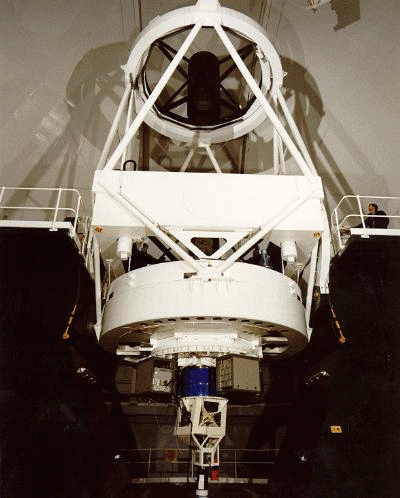 |
- The INT  was originally used at Herstmonceux in the UK, but was moved to La Palma
and has been rebuilt with a new mirror and new instrumentation. It has
a 2.5 m diameter primary mirror and is mostly used for wide-field imaging
and spectroscopy. It became operational in May 1984. Logo: [gif,34k][jpg,103k].
was originally used at Herstmonceux in the UK, but was moved to La Palma
and has been rebuilt with a new mirror and new instrumentation. It has
a 2.5 m diameter primary mirror and is mostly used for wide-field imaging
and spectroscopy. It became operational in May 1984. Logo: [gif,34k][jpg,103k]. |
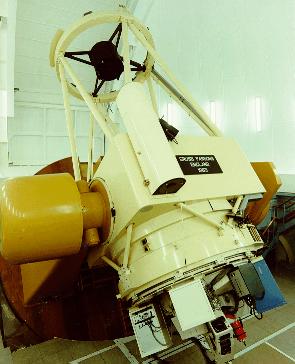 |
- The JKT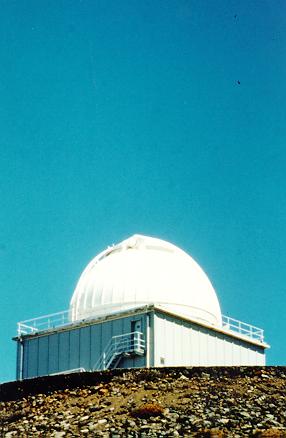 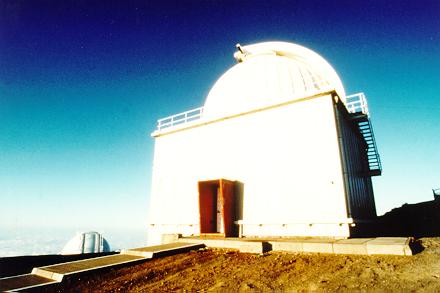 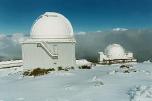 has a primary mirror of 1 m diameter. It is mainly used for observing relatively
bright objects. It was first operational in May 1984. Logo: [gif,33k][jpg,27k].
has a primary mirror of 1 m diameter. It is mainly used for observing relatively
bright objects. It was first operational in May 1984. Logo: [gif,33k][jpg,27k]. |
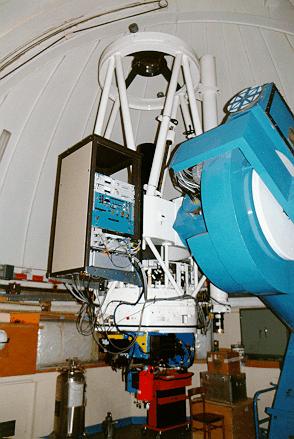 |
Considering the weight of the instruments,
the telescopes move with astounding precision. The WHT, for example, weighs
190 tonnes and has a pointing accuracy of 1 - 1.5 arcseconds, which compares
to the diameter of a coin seen at a distance of 2 km. It can track the
stars with an accuracy even ten times better!
|

